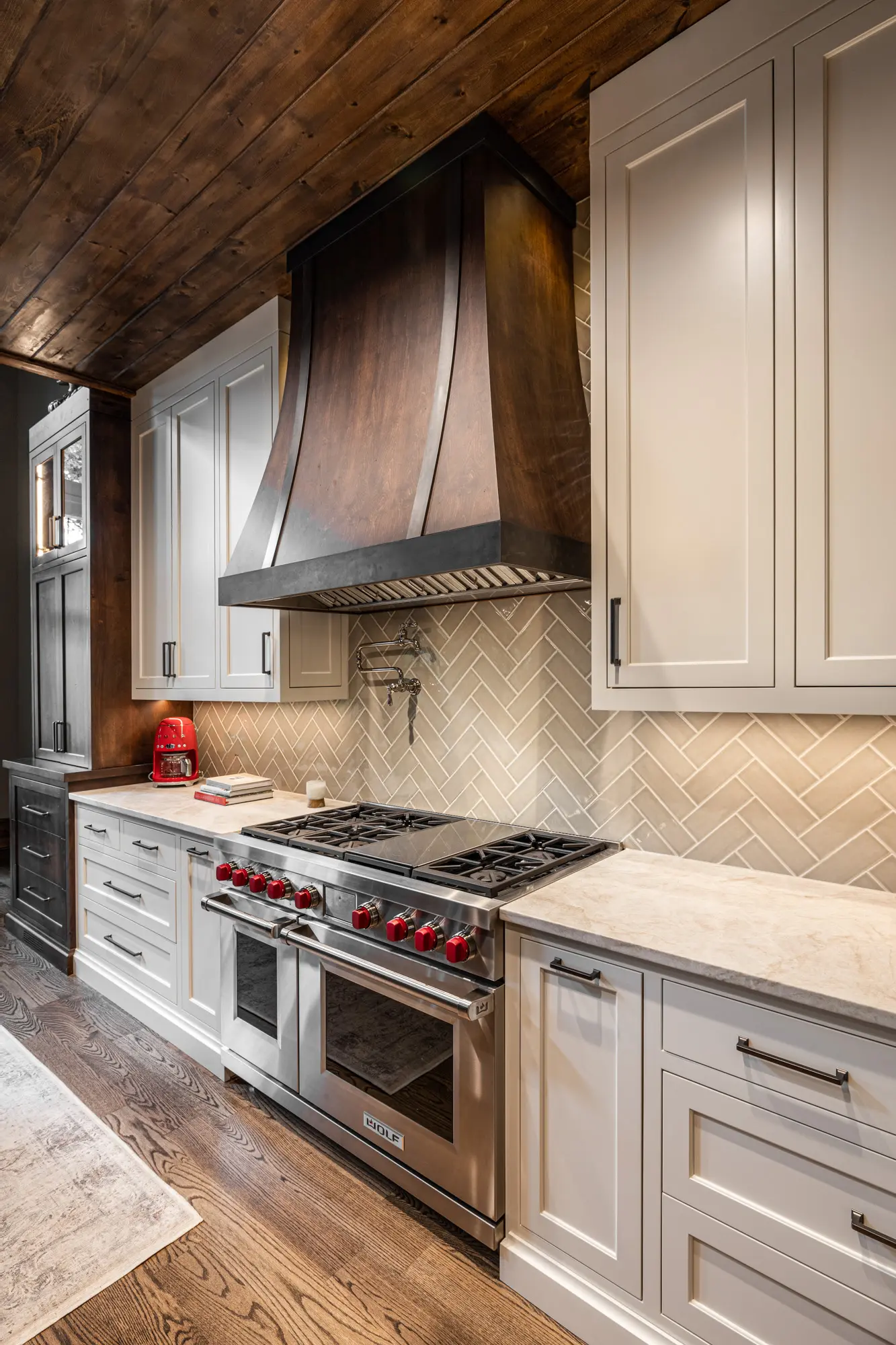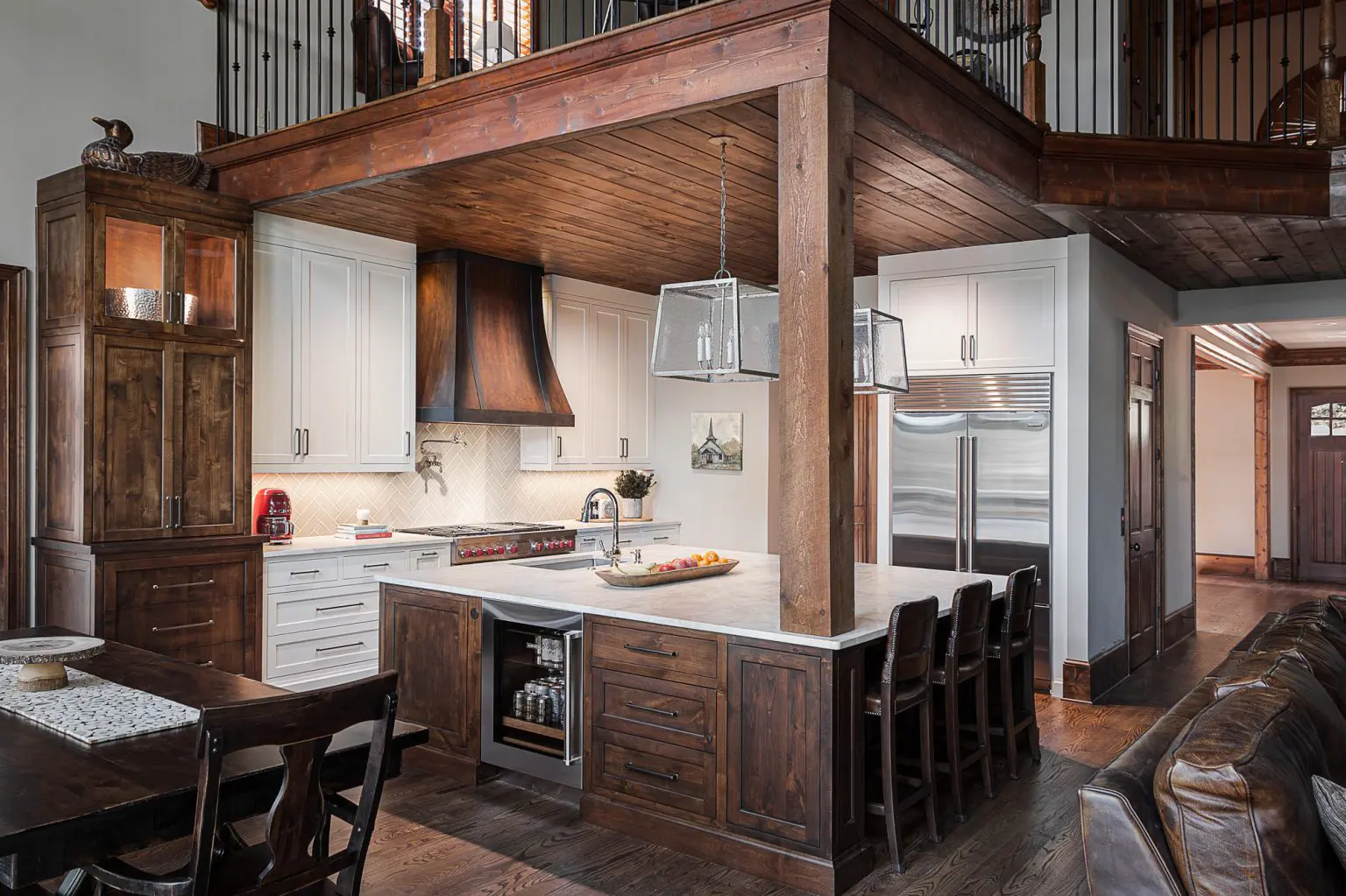20 Common Kitchen Remodeling Mistakes Homeowners Need to Avoid
July 10, 2022 | KitchenThe National Association of Realtors (NAR) recently surveyed 5,000 consumers, real estate agents, and remodeling experts across the country. The questions centered on their recent remodeling projects, and how much joy they took from them.
Of all the renovations covered in the survey, kitchen remodels had the highest “Joy Score.” In fact, 93% of homeowners said a newly-renovated kitchen gave them a greater desire to spend time at home.
Are you preparing for a kitchen makeover project of your own? If so, it’s important to get it right the first time. There are many different kitchen remodeling mistakes that could negatively affect the outcome of your efforts.
Today, we’re sharing 20 of the most common missteps that usually occur in the heart of the home. If you can avoid these, you can rest assured that your new space will bring you as much joy as possible.
1. Tackling It All Yourself
There are many minor kitchen updates that you might be able to do on your own. For instance, swapping outdated hardware for sleek new knobs and pulls can make the space feel more modern. However, if you’re planning to renovate this space completely, then it’s always best to trust the design and installation process to the experts.
At Michael James Remodeling, our team can walk you through every aspect of your kitchen remodel project. We have years of design expertise and experience and are ready to bring your vision to life.
2. Starting Without a Budget
It’s important to make sure that you can comfortably afford any home project that you invest in. Before you start choosing countertops and narrowing down paint colors, take the time to create a kitchen remodeling budget.
You don’t want to get halfway through the project only to find that your funds are running out. By planning beforehand, you can make sure you don’t take on more than you can handle. Then, you’ll have parameters to work within, which can also help you narrow down your options!
Not sure where to begin? It helps to use a template and follow a guide. Here are a few tips for budgeting the right way.
3. Not Thinking Big-Picture
Whether you’re planning an open-concept kitchen or yours will be mostly enclosed, it still helps to look at the room from various angles. Think about how it will look as you walk in the door, or the view from the living room.
Are there existing furnishings, paint, or wall decor that you need to design around? While all of your adjoining spaces don’t have to be carbon copies of one another, you do want them to flow seamlessly and effortlessly throughout your home.
4. Over-Prioritizing Other Tastes
The internet can be invaluable when you’re looking for kitchen remodeling ideas. That’s why we offer plenty of pictures of our recently completed projects, as well as walkthrough videos that give you an up-close view of each space.
While these are great ways to glean inspiration, don’t forget to listen to your intuition. We all have our own unique design aesthetic, and you deserve to live in a space that feels like you. Find a design team like ours that will help you create the space of your dreams.
5. Forgetting Pass-Through Access
If your kitchen is centrally located within your home, then there’s a good chance that it serves as a “pass-through” to other parts of the house. When you’re thinking about how to rearrange and renovate this room, don’t forget to keep those transitions in mind.
This is especially true in narrow galley kitchens. Even cabinetry can become bulky and crowd the walkway, so opt for sleek and streamlined touches, such as using pocket doors over ones that swing.
6. Not Leaving Enough Space Around Fixtures
A large kitchen island can command the room. It’s a great place for families to gather, and it offers lots of space for meal prep. However, it’s easy to overlook one important measurement when planning your kitchen remodeling project: the space around it!
Ideally, it’s best to allow at least four feet of room between the edge of the island and your countertops. This way, you can easily cook at the range while someone’s working at the sink without bumping into one another. If possible, aim to leave the same amount of space around any units or appliances installed opposite one another.
You can adjust this slightly if your kitchen is on the smaller side, but it’s not advisable to go below 36 inches of clearance.
7. Choosing Appliances Last
A beautiful kitchen is one in which the cabinets and appliances all flow together. A difference of even a few inches can make the room feel unplanned.
That’s why it’s smart to choose your appliances first. Then, you can work around those dimensions as you choose your cabinetry measurements. This way, your contractor will know exactly how much space you have to work with and can optimize every square inch.
8. Ignoring Corner Nooks
Corner cupboards can help you carry your cabinetry all the way from one wall to the next. However, without proper planning, they can wind up unused and empty. These spaces can be a little awkward to access, which can leave you unsure what to put in there.
Today, there are many different cabinet storage solutions designed to work specifically within corner cabinets. Features such as fold-out drawers and spinning racks help you make the best use of this space. Ask your contractor about installing these at the same time as the cabinets, and you may be surprised at how much storage space you can gain.

9. Under-Emphasizing Lighting
Lighting can make a major difference in any room in your home, especially the kitchen. From task lighting by the sink to statement pendants above the island, this is a great way to showcase your personality.
When planning your remodel, don’t forget to take these fixtures into account. In addition to strategically placed recessed lighting, you may also want to highlight a certain feature of your kitchen with a special accent light or go dramatic with a bold chandelier.
There are an array of different kitchen lighting options to consider, so work with your design team to determine which ones will complement your space.
10. Installing Floors Before Cabinets
Speaking of installation timelines, it’s best to install your floors after you put in your cabinets. Why not put them down first? If you do so, there are two issues that could occur.
First, the weight of the cabinetry holds the floors in place, so they’re unable to expand and contract with slight temperature changes. When this happens, it stresses the wood and makes it more likely to cup, bow, or peak.
In addition, it also becomes much more difficult to remove the floor without damaging or ruining the lower-level cabinetry altogether. If you fit your flooring around and up to your cabinets, you can reduce both of these risks.
11. Choosing Impractical Flooring
The kitchen is arguably the hardest-working room in your house. It’s bound to withstand its fair share of spills, stains, and scratches. It’s important to keep this in mind when choosing new kitchen flooring.
While some models might look elegant and luxurious, they might not be well-suited for such a common space. Instead, look for options like engineered hardwood or luxury vinyl planks (LVP). These offer the look and feel of real hardwood flooring but are more water-resistant and durable.
12. Failing to Integrate Appliances
Wherever possible, look for ways to integrate your appliances into your kitchen. This means fewer machines will be sitting on your countertop, cluttering up your workspace.
For instance, a built-in microwave looks more streamlined than a tabletop model, and a hot water tap is more inconspicuous than a kettle left out on the stove. You can even find built-in coffee makers!
In addition, also ask your contractor about installing soap dispensers by your kitchen faucet. This way, you don’t have to leave oversized bottles of hand soap or dish detergent sitting out.
13. Skipping Rugs
While you don’t need an area rug in the kitchen, it does help to have runners and smaller rugs placed in key areas.
For instance, a rug in front of the sink can prevent spill-related slips and falls. You may also want to place one in front of your dishwasher, pantry, or refrigerator. Think about where you envision standing for the longest periods of time, and put something cozy underfoot.
Anti-fatigue mats are especially great for the kitchen, keeping your feet and legs comfortable as you chop and clean.
14. Choosing Form Over Function
Yes, you deserve to see every aspect of your dream kitchen come to life. However, in your effort to create the most stunning space possible, don’t make the room inaccessible.
You should be able to easily access your most commonly used items, such as pots, pans, and utensils. If they’re tucked far away and out of reach, you might find that you don’t use your kitchen as frequently.
Ask your contractor about ways to marry both form and function, so the layout is convenient but also chic.
15. Neglecting the Kitchen Triangle
While it doesn’t work in every single space, the much-revered kitchen triangle does make sense in most homes. In short, this means installing your stove, sink, and refrigerator in a roughly triangular shape, making sure that they aren’t too far away from one another.
If the layout isn’t possible in your kitchen, don’t lose sleep over it. There are plenty of ways to make sure you aren’t walking all around the room to use your appliances, and some designers choose to eschew this rule altogether.
The best solution is to visualize your most common traffic patterns and look for ways to accommodate them.

16. Not Measuring Appliances
A fridge is a fridge, right? Not quite. When you’re choosing cabinets and flooring, it’s easy to assume that the appliances you’ve selected will just slip right into place.
However, many homeowners are surprised to find that they won’t fit into the pre-built spaces at all. When this happens, the contractor has to go back and re-work those areas, which can add time and money to your project. Always measure your appliances before making any design decision, and factor in the clearance space they’ll need to function properly.
17. Mischeduling Delivery Times
Right now, material delivery times continue to fluctuate, and homeowners are experiencing longer delays than normal. In an effort to circumvent this issue, they’re ordering their big-ticket items like appliances far in advance.
While that’s a smart move, think about how that could affect the timeline of your project. If your refrigerator isn’t coming for another six months, where will you store your new countertop until then?
Make sure you understand your delivery timelines, as well as how items will arrive at your home. If you cannot accept palletized items, you’ll need to determine where those materials will go in the meantime. If you purchase from a showroom, most facilities will receive and store the goods for you until you’re ready to use them.
18. Rushing Furniture Selection
It’s better to eat standing up for a few months than to choose seats that are ill-fitted for your kitchen. When selecting furniture such as barstools or counter stools, take the height of the table into account. Most bar-height stools are between 28 and 32 inches high, and counter stools are 24 to 27 inches high.
Make sure your chairs are tall enough to help you sit comfortably. They should also provide plenty of legroom for you and your guests. Take a similarly thoughtful approach to any other type of seating you purchase or build for your kitchen, such as a breakfast nook.
19. Skipping the Backsplash
Want to add a dose of drama to your kitchen? A backsplash is a great way to do so. Not only does it decorate your wall, but it also serves a functional purpose, keeping cooking splatters away neatly contained.
You can simply incorporate your existing wall material into the backsplash, or make it stand out by choosing a contrasting tile color or design. Many modern kitchens are even skipping smaller tiles in favor of large slabs of marble or granite for an eye-catching change.
20. Skimping on the Paint
You might think that you can save a little money by using low-quality paint in your kitchen. However, you’ll pay for this downgrade down the road.
Go ahead and invest in premium paint that can stand up against the daily grind you’ll place on it. If possible, use paints that are specially meant for the kitchen. These will be resistant to grease and fingerprints and will hold up well against regular wiping.


